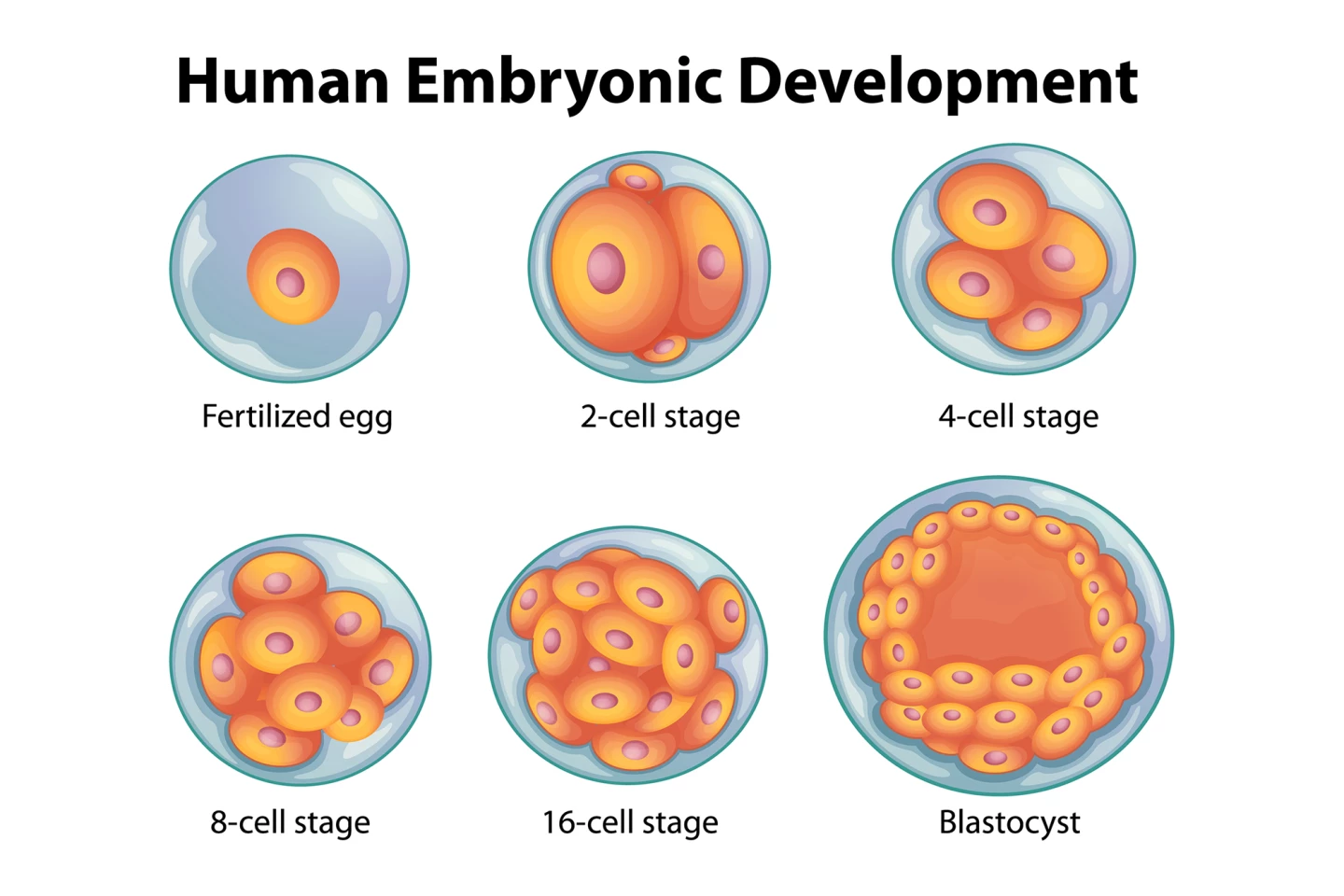A groundbreaking study has revealed that your mom and dad’s DNA don’t just pass on telomere length, they actively reshape it in the first days of life, influencing how we age and our risk of developing diseases such as cancer.
Telomeres are repetitive DNA sequences at the ends of chromosomes that, like the plastic tips on the ends of shoelaces, protect against the unravelling and wear and tear of our genetic information. However, every time a cell divides and DNA is replicated, those protective caps get a little bit shorter, eventually reaching a point where cell division stops. This state, called cellular senescence, has been linked to diseases such as cancer.
Traditionally, scientists have believed that telomere length is either a polygenic trait, controlled by multiple genes, or is passed directly to the offspring through parental sperm and egg cells. However, researchers from the University of Pennsylvania (UPenn) seeking to understand how telomere length is inherited found that there’s another factor to consider. A “parent-of-origin effect” influences how telomeres are actively lengthened or shortened during early embryonic development.
“We wanted to ask how telomeres are really inherited,” said Michael Lampson, PhD, a professor of biology at UPenn’s School of Arts and Sciences, and the study’s co-corresponding author. “Is it just the telomere DNA sequence you inherit from your parents, or is it determined by the genes that regulate telomeres? What we found doesn’t fit neatly into either box.”

Conducting controlled experiments in mice, the researchers crossed strains with very different telomere lengths (long vs short) in both directions. For example, long-telomere fathers with short-telomere mothers, and vice versa. They measured telomere length in embryos, from the two-cell stage onward, and in adult offspring using a DNA imaging technique called FISH (fluorescent in situ hybridization), which lights up telomeres so their length can be measured under a microscope. The two-cell stage embryo is the very early embryonic stage where the original fertilized egg (zygote) has divided into two distinct cells (blastomeres) that continue to divide. The researchers also searched for molecular signs of a process called alternative lengthening of telomeres (ALT), a telomere-extending mechanism that doesn’t rely on the usual enzyme, telomerase.
Typically, telomerase adds DNA to telomeres, thereby helping to maintain their length. However, while most cells stop producing telomerase after early development, many cancer cells can reactivate it. The majority of cancers (85% to 90%) use the reactivated telomerase to achieve the unlimited cell division that’s needed for tumor growth and overcome the normal limits placed on cell replication. ALT is a distinct, alternative mechanism that some cells use to extend telomeres by using DNA recombination instead of telomerase. It’s used by a minority of cancers, the remaining 10% to 15%, to achieve unlimited proliferation.
“This parent-of-origin effect is consistent with patterns we’ve seen in human studies,” said UPenn associate professor of biology, Mia Levine, PhD, the study’s other corresponding author. “For example, children of older fathers tend to have longer telomeres than children of younger fathers. But teasing apart why that happens is difficult, because human studies are confounded by so many factors – diet, smoking stress, lifestyle. That’s why we turned to a controlled animal model to test these ideas directly.”
The researchers found that an offspring’s telomere length was not an average of the parents’ telomere length. Instead, when paternal telomeres were long and maternal telomeres were short, the embryo’s telomere elongated rapidly. In the opposite cross (long maternal plus short paternal), telomeres shortened. If both parents had similar telomere lengths, telomeres stayed the same.

These changes were seen extremely early. Differences in telomere length were already present at the two-cell stage of the embryo, before the embryo’s own genes are even active. This shows that the effect is triggered by parental contributions, not by the embryo’s genome. Embryos where telomeres elongated showed signs of ALT activity, which was triggered only when there was a mismatch in parental telomere lengths. It was noted, too, that the difference wasn’t just about telomere length. Maternal and paternal chromosomes had distinct epigenetic marks, which don’t change the DNA code but can affect how it’s read and used, that appear to influence whether ALT is activated.
“When people study ALT in cancer cells, it’s already been happening for many generations,” Levine said. “But in embryos, we can catch ALT at its very initiation, at the very first cell divisions. That gives us a window into how this pathway naturally gets switched on.”
That this was a mouse study might mean that the results don’t fully translate to humans, although, as Levine said, previous human data show similar parent-of-origin patterns. An additional limitation is that controlled breeding removes the environmental effects – things like stress and diet – that could influence telomeres in real-world settings.
Despite these limitations, the study’s findings have significant real-world implications. Telomere length is linked to aging and cancer. Knowing how it’s inherited could improve risk prediction for age-related conditions. Further, learning how to control telomere length early in development could lead to new approaches for regenerative medicine or fertility treatments.
The researchers’ next step is to determine whether their results apply to humans or not.
“On the human side, we’re now taking advantage of long-read genome sequencing,” said Levine. “That lets us look directly at telomeres in family trios – mom, dad, and child – to ask if the same parent-of-origin effects we saw in mice are detectable in humans.”
The study was published in the journal Current Biology.
Source: UPenn







